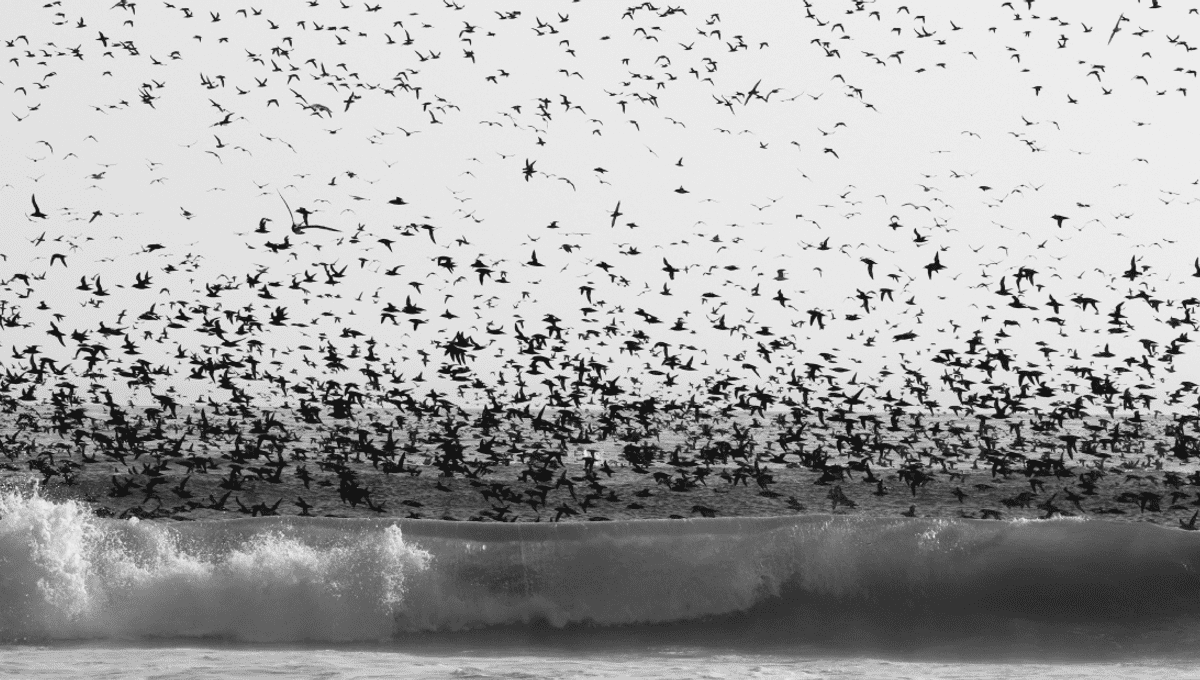
“Seabird Invasion Hits Coastal Homes” reads the headline of the Santa Cruz Sentinel published on August 18, 1961. Accounts from that fateful day tell of thousands of birds crashing from the skies and littering streets and lawns. Curious residents who ventured out with torches to take a look were sent scurrying back into their homes, as half-living birds made a break for their flashlights.
As news of the devastating invasion broke, the story piqued the interest of “mystery thriller producer Alfred Hitchcock” in Hollywood who, the newspaper says, requested a copy of the paper after hearing about what happened. As luck would have it, he was in the process of adapting British writer Daphne du Maurier’s horror story, The Birds, at the time.
The invading avians in question were sooty shearwaters (Ardenna grisea) that came crashing down in their thousands in Capitola and Pleasure Point, California. They’re long-distance champions as far as migrations go, annually flying around 64,000 kilometers (40,000 miles) to make the journey from their nesting sites in the south to rich feeding grounds in the north.
Somewhere along the line that journey went very wrong in 1961, as flocks of shearwaters fell from the skies and chaos ensued.
“One bird flew full speed into a tall light standard,” reads the Sentinel. “A sheriff’s car prowling through the Pleasure Point area was rammed by several shearwaters as it shined its spotlight into the air. Richard VonMagus, a teen-ager visiting on Chesterfield drive, rushed out of a home and was struck by a bird. Gibson Walters, 3021 Pleasure Point drive, had to duck a flying bird when he went out a little after 2 a.m.”
Reports from residents on the ground described how the birds cried like babies and quacked like ducks as they struggled, vomiting as they went, which created a strong odor – something the residents didn’t love, but the local cats apparently did.
As to what went so wrong for the shearwaters, it would take 50 years before scientists would be able to pin down a definitive answer. They were helped along by a similarly perplexing phenomenon whereby a flock of brown pelicans washed ashore exhibiting symptoms similar to those of the shearwaters. The cause? Domoic acid, a marine biotoxin produced by diatoms of the genus Pseudo-nitzschia, that causes amnesic shellfish poisoning.
Domoic acid is one of many compounds which can accumulate in the bodies of animals higher up the marine food chain. In this case, the pelicans had eaten many anchovies, which in life had eaten many plankton; the plankton were contaminated with the acid, initially at low concentrations, but it built up with each trophic level.
Symptoms of domoic acid exposure include disorientation, seizures, coma, and death, and it can affect birds and mammals like seals. Specimens collected around the time of the sooty shearwater debacle revealed that they contained Pseudo-nitzschia microalgae fragments, indicating that, as with the pelicans, domoic acid was likely the culprit.
Hitchcock’s film was put together before The Curious Case Of The Plummeting Sooty Shearwaters was solved, so didn’t quite contain the more nuanced themes of the true events. As for capturing the chaos of birds going crazy everywhere, all of the time? We’d say he got that just right.
[H/T: Popsci]
Source Link: The Real Avian Invasion That Struck While Alfred Hitchcock Was Making "The Birds"